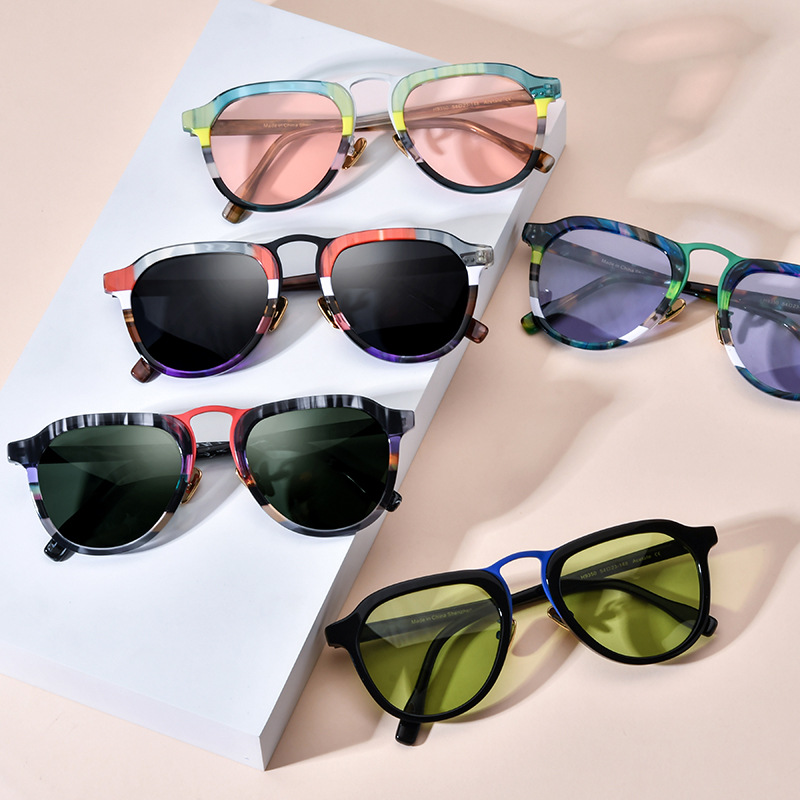Glass lens
Refraction: The refractive index of glass is high, generally between 1.5-1.9. This makes the glass lens have a strong ability to refract light and can more accurately control the direction of light propagation. In terms of correcting vision, glass lenses can provide a clearer visual effect. At the same time, the high refractive index also means that the Angle of light changes greatly when it travels inside the lens, so that the image of the object seen by the wearer is closer to the real situation.
Reflection: The glass surface is relatively smooth, and the reflectivity of light is usually about 4%-8%. If there is no special anti-reflection treatment, the surface of the glass lens is easy to reflect light, which will affect the visual clarity in a strong light environment, and may also produce glare, causing discomfort to the eyes. However, technology such as coating can effectively reduce the reflectivity of glass lenses and improve the transmittance and visual quality.

Resin lens
Refraction: The refractive index of resin lenses is generally between 1.49-1.74. Compared with glass lenses, its refractive index can be selected from a wide range, to meet the needs of different degrees. Lower refractive index resin lenses are relatively thick, but with the development of high refractive index resin materials, thinner lenses can now be produced. The refraction properties of resin lenses can be adjusted by adding different chemicals to achieve better optical results.
Reflection: The surface reflectivity of the resin lens is similar to that of the glass lens, but because the resin material is soft, it is easy to form small scratches on the surface, which will scatter the light and increase the complexity of the reflection. However, the reflection can also be reduced by coating technology to improve the light transmission and anti-reflection performance of the lens. For example, multi-layer anti-reflection films can reduce the reflectivity of resin lenses to less than 1%, effectively reducing glare and improving visual contrast.
PC lens (polycarbonate lens)
Refraction: The refractive index of PC lenses is usually around 1.586. It has good optical properties, the refraction of light is more uniform, can provide a clear visual effect. At the same time, the PC lens has a strong impact resistance, which is suitable for sports sunglasses and other occasions with high safety requirements. Although its refractive index is not particularly high, PC lenses perform well in some applications that require less thinness and are more concerned with safety and durability.
Reflection: The reflection characteristics of PC lenses are similar to those of resin lenses, but its surface hardness is relatively low, and it is more prone to scratches and wear, which affects the reflection effect. Therefore, PC lenses usually also require special surface treatment, such as hard coating and anti-reflection film, to improve their anti-reflection performance and durability. After processing, the reflectivity of the PC lens can be effectively controlled to reduce the interference of light reflection on vision.
Polarized lens
Refraction: The main role of polarized lenses is to filter polarized light, and its refraction performance is similar to that of ordinary lenses, but the design will pay more attention to the refraction and control of light in a specific direction. Polarized lenses usually add a special polarizing film or use a special molecular arrangement structure in the lens, so that only a specific direction of light can pass through, effectively eliminating glare and improving visual contrast and clarity. At different angles, the refraction and filtering effect of the polarized lens on the light will be different, which is also the key to effectively improve the visual effect.
Reflection: The reflectivity of polarized lenses is usually low, because the polarized film or special structure on the surface can not only filter the polarized light, but also reduce the reflection of light to a certain extent. High-quality polarized lenses can reduce the reflectivity to a very low level, greatly reducing the reflection of external light on the surface of the lens, so that the wearer can see the object more clearly, especially in the water, snow and other easy to produce glare environment, the anti-reflection and filter glare effect of the polarized lens is more obvious.
Post time: Mar-24-2025